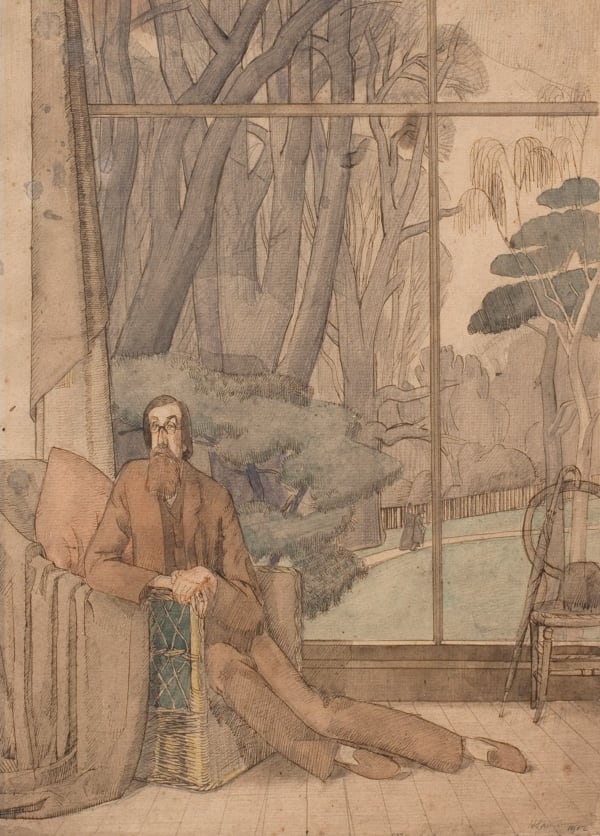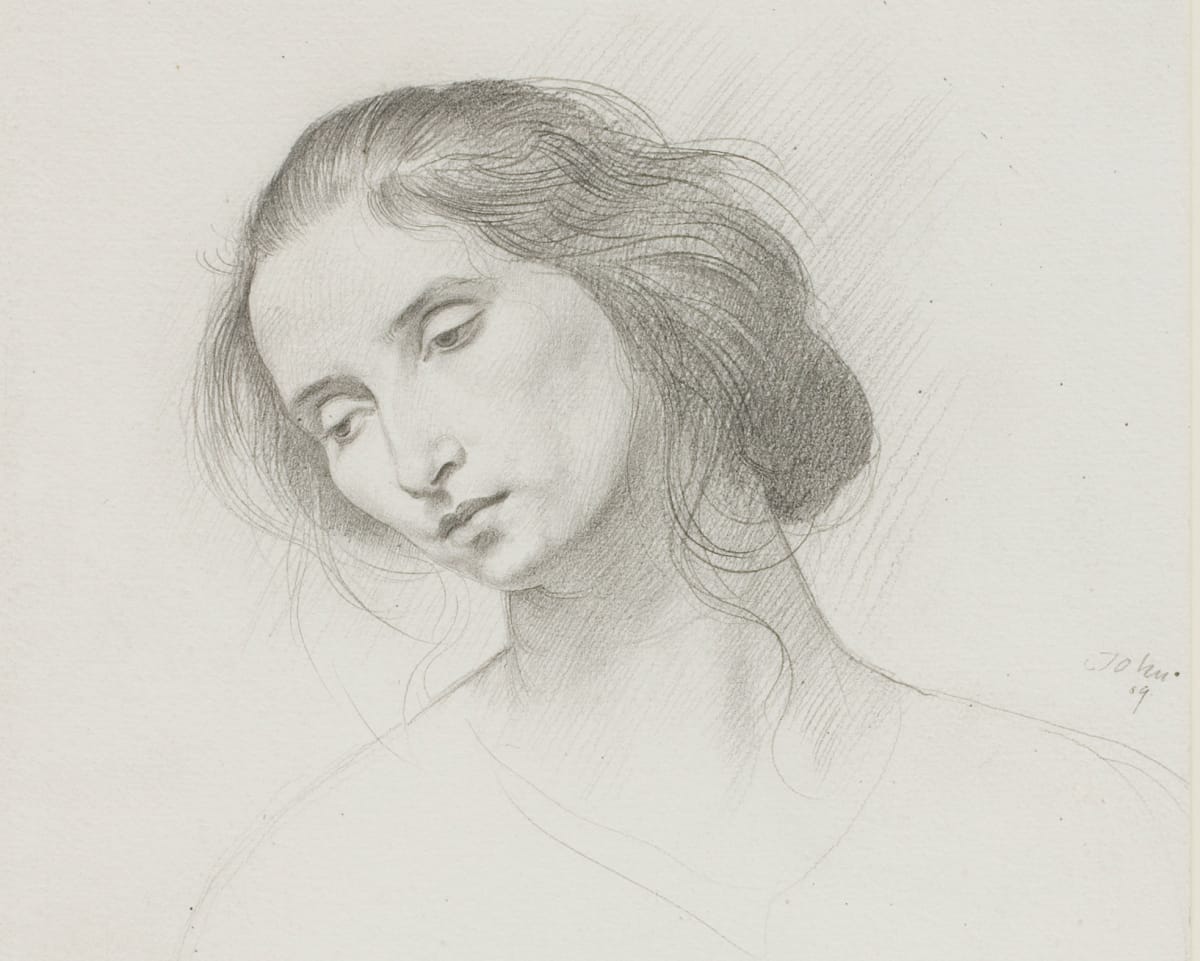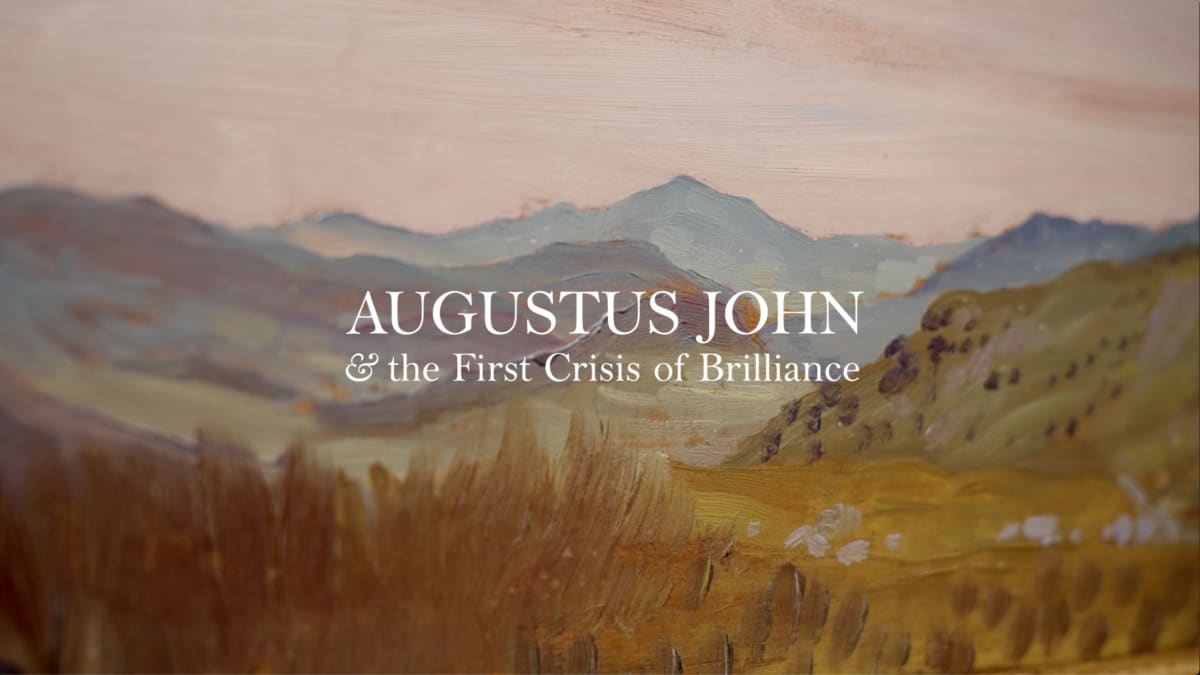Henry Lamb
The gallery regularly handles, acquires and advises on works by Henry Lamb. For more information or the availability of work, please contact the gallery.
Henry Lamb (1883 - 1960)
Henry Lamb was born in 1883 in Adelaide, Australia, one of seven children to Professor Horace Lamb and his wife, Mary. Shortly after his birth, his father took up a post at the University of Manchester, and Henry Lamb was raised in Manchester. He initially trained as a doctor in Manchester and then Guy’s Hospital, abandoning this path in 1905, but returned to medicine upon the outbreak of WWI. Lamb served as a surgeon in Macedonian and Palestine during the war, and was appointed an Official War Artist upon the conclusion of his hostilities. A commission for a large-scale war work as part of a project involving many artists resulted in his monumental Irish Troops in the Judean Hills Surprised by a Turkish Bombardment (Palestine War Picture), 1919, Imperial War Museum, a complementary work to Stanley Spencer’s Travoys Arriving with Wounded Soldiers, 1919, Imperial War Museum.
Lamb had his first solo show at the Alpine Club Gallery in London in 1922, followed be a series of solo and group exhibitions at the prestigious Leicester Galleries for the rest of his working career, including a memorial exhibition in 1961 after his death. In 1940 Lamb was again appointed an Official War Artist until the end of WWII in 1945, with the majority of his output consisting of portraits of servicemen, primarily officers but also some rank and file soldiers. In 1942 he was appointed a Trustee of National Portrait Gallery, and a Trustee of the Tate in 1944. In 1949 he was elected to the Royal Academy. By the end of the 1950s he was suffering from severe arthritis, which impeded his painting, and he died in 1960. His work is held in major international public collections including the Tate, the Imperial War Museum and the National Gallery of Canada.
After abandoning his initial medical studies, Lamb moved to London in 1905, running away with his future first wife, and enrolled at the Chelsea School of Art. Founded by the star students of the Slade School of art, William Orpen and Augustus John, Lamb and John quickly struck up a rapport, which was to be instrumental in Lamb’s artistic development. Following the influence of John’s Slade School training, drawing became all-important, with an emphasis on observation from life, precision of drawing by using the point of the pencil, and cultivating ‘the delicate line’ as termed by John.
Lamb established himself at the heart of London’s many and interlinking artistic circles. He became friendly with the Bloomsbury group, particularly Duncan grant and Lytton Strachey. His 1914 portrait of Lytton Strachey, now in the collection of the Tate, was described by the eminent art historian and critic Sir John Rothenstein as “one of the best portraits painted in England in this century”. He painted numerous literary figures including Evelyn Waugh, 1930, A. E. Housman and John Masefield amongst many others. He was a Founder Member of the Camden Town group in 1911 alongside Walter Sickert, Spencer and Harold Gilman, and a Founder Member of the London Group in 1913 with Gilman, Mark Gertler and David Bomberg. His particular friendship with brothers Gilbert and Stanley Spencer was to prove especially important to both Stanley and Lamb, as Lamb took on a father-figure role to the young artist introducing him to patrons such as Lady Ottoline Morrell and the Behrends.
-

Writer and Curator Anna McNay reviews Augustus John & the First Crisis of Brilliance
Studio International July 10, 2024Anna reviews the exhibition, particualrly exploring the selection of portraiture and the relationships between the collection of artists and their models depicted in the show.Read more -

Curator & Art Historian Lynda Nead reviews Augustus John
Apollo May 23, 2024Lynda Nead discusses the representations of women in the exhibition, particularly exploring the many portrayals of one woman—by turns notorious or beloved—Euphemia Lamb. She also...Read more


















